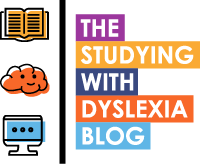Enhanced Engagement:
Multisensory storytelling captivates attention through various senses (visual, auditory, tactile), making learning more engaging for students with SEND.
Improved Comprehension:
Combining multiple senses helps reinforce understanding, making abstract or complex concepts easier to grasp.
Memory Retention:
Using different sensory inputs can improve memory retention, as students are more likely to recall information presented in a variety of ways.
Encouragement of Expressive Language:
By engaging with stories through touch, sound, and sight, students may feel more confident in expressing their thoughts and emotions.
Increased Participation:
Multisensory activities cater to different learning styles, encouraging participation from all students, regardless of their abilities.
Development of Motor Skills:
Tactile activities, such as manipulating objects or textures related to the story, help in the development of fine and gross motor skills.
Promotion of Social Skills:
Group storytelling sessions provide opportunities for students to interact, share, and collaborate, fostering social skills.
Emotional Regulation:
Engaging multiple senses can help students manage emotions, as the calming effects of certain sensory inputs (e.g., soothing sounds or textures) contribute to a more relaxed state.
Personalised Learning:
Multisensory storytelling allows for the adaptation of content to suit individual needs, making it an inclusive approach.
Cultural and Emotional Awareness:
Through stories, students can explore different cultures and emotions, helping them develop empathy and understanding.
How to Implement Multisensory Storytelling
Choose the Right Story:
Select a story that is simple, engaging, and adaptable to different sensory inputs. Consider the interests and needs of the students to ensure relevance.
Use Visual Aids:
Incorporate images, videos, or colourful props that relate to the story. These could include picture cards, puppets, or digital media to enhance visual engagement.
Incorporate Sounds:
Use sound effects, music, or voice modulation to bring the story to life. Instruments, recorded sounds, or even the students’ voices can be utilised.
Add Tactile Elements:
Introduce objects, textures, or materials that students can touch and feel during the storytelling. For instance, if the story involves an animal, provide fur, scales, or feathers to touch.
Smell and Taste:
If appropriate, include smells or tastes related to the story. For example, if the story involves a bakery, the smell of bread or a small taste of something sweet can enhance the experience.
Movement and Role Play:
Encourage students to act out parts of the story or use gestures and movements that correspond to the narrative. This can include mimicking animal movements, dancing, or simple actions like clapping.
Interactive Technology:
Use interactive whiteboards, tablets, or other technology to engage students with multimedia elements of the story. Apps that provide sensory feedback (vibrations, sounds) can be particularly useful.
Repetition and Routine:
Repeating the story over several sessions helps reinforce learning and gives students the chance to become more comfortable with the sensory elements. This repetition can also be part of a routine, which many SEND students find reassuring.
Personalisation:
Adapt the storytelling to meet the specific needs of each student. This might include simplifying the language, adjusting the sensory elements (e.g., using softer textures for students sensitive to touch), or allowing students to choose how they want to engage with the story.
Feedback and Reflection:
After the storytelling session, encourage students to share their thoughts or feelings about the story, either verbally or through alternative communication methods. Use their feedback to adjust future sessions.
Practical Example:
Story: "The Three Little Pigs"
Visuals: Use a felt board with pig and wolf cut-outs; show images of different types of houses (straw, wood, bricks).
Sounds: Play the sound of the wind blowing; use a drum for the wolf knocking on the door; play happy music when the pigs are safe.
Tactile: Provide straw, small wooden sticks, and bricks (or blocks) for students to touch and compare.
Smell: Introduce the smell of straw or hay.
Movement: Have students pretend to build the houses, huff and puff like the wolf, or act out the pigs' escape.
Interactive Tech: Use a storytelling app that allows students to interact with the story elements by touching the screen to hear sounds or see animations.
About the Author Arran is a severely dyslexic adult with over 20 years of experience working in the dyslexia and neurodiversity field. He has previously worked with the British Dyslexia Association and collaborates closely with educational institutions as a consultant and governor. Arran is the founder of the Neurodiversity Show and SEND Group. This article was updated with the assistance of artificial intelligence to reflect Arran’s experiences and insights.

